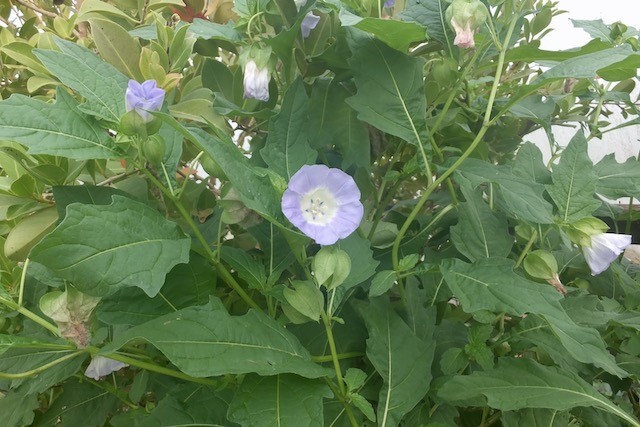
A clue as to why you might want this in your greenhouse is the common name. In a similar manner to French Marigolds it’s thought having this discourages Whiteflies. I can attest I’ve seldom seen one since I started growing these. Oddly you may already have had this appear by accident as this half hardy annual was once popular with Victorians and the seed is long lived so plants pop up in unexpected places.
Nicandra physaloides is also known as the Apple of Peru for after the large pale blue blooms come pretty paper lanterns containing brown berries all much resembling those of Physalis. The physaloides refers to this resemblance though unfortunately these berries turned out poisonous as may be the strong smelling foliage, these are more of the huge Solanaceae family after all
As the second common name correctly suggests these are a South American genus and proving poisonous the genus was named after Nikander of Colophon a Greek from 100BC who wrote on natural history, including two treatises on poisons.
Started in spring these make large plants quickly and will be flowering from early summer till worn out in late autumn. Each bell-shaped flower does not last long but come continuously, more if the seed-pods are removed as each flower fades. However these may be better left on to form the five winged calyce ‘lanterns’ that enclose the berries. Stems of these can be detached, hung upside down and dried to become most effective in flower arrangements.
Sow carefully for if Nicandra is sown thick it performs poorly, sown individually or soon thinned each becomes an imposing specimen -if potted up soon and often enough. Although not fussy as to soil or compost these plants are fast growing, very hungry and thirsty and respond to good conditions. Thus unless you have a generous space to fill and want the full dramatic effect these are better confined one per large pot or tub for untrammelled in rich soil these may become massive.
The connoisseur may find seed for both the original and a variegated variety ‘Splash of cream’, also there’s a similar even more striking species N. violacea with violet hairs on violet stems with violet shading to white flowers.










